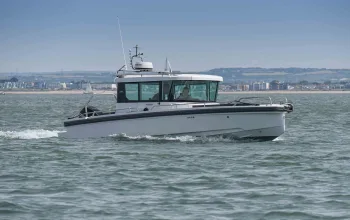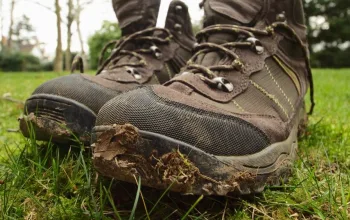1. Beginner Tip
Balance from the feet up
Expert windsurfers make it look easy because they make few unnecessary movements. A beginner, meanwhile, looks like a windmill in a hurricane. Standing on a board for the first time, they tend to over-react to every wobble. They feel themselves toppling one way, so they hurl themselves in the other direction. It’s exhausting. The answer is firstly to relax and stand on your feet as if on dry land. Then if you need to correct your balance, start by putting pressure on the toes or the heels; if that’s not working, flex the ankles, then the knees, then the hips and then only as a last resort move the arms and shoulders. The more relaxed you keep the upper body the easier it is to stay in balance.
2. Intermediate Tip
Show the logo!
Like a carved turn through the snow by a skier or snowboarder, or like a surfer’s slashing bottom turn, the carve gybe is a fast, dynamic change of direction where the board is banked over and turns along its inside edge. There’s a lot going on, but for me the key is to keep a constant pressure on the inside edge with the feet, so the arc is smooth and constant. I tell people to imagine they have a potentially lucrative exposure contract. Their sponsor’s logo is on the bottom of the board and for every second that logo is visible during the turn, they get £100. But if at any time during the turn the board rides flat and the logo is hidden, they have to pay £100. It’s amazing how the offer of money can make people perform!
 3. Advanced Tip
3. Advanced Tip
How can you forward loop? The main challenge of this scary but eternally impressive stunt, where board, sail and rider perform a complete aerial forward roll, is less technical and more psychological. How do you make yourself pull the trigger and really go for it?
For me it’s all down to the head and where you look. When you learn a somersault in gymnastics, the key is to start the rotation with the head. Turn the head towards where you want to end up and the body will follow. It’s the same with the loop. So, put a watch on your back hand and the moment you take off, look back at your watch to check the time. It’s a simple action that has three immediate benefits. It makes you turn the shoulders and initiate the rotation. By turning back you automatically pull on the boom and increase the power. And it makes the whole thing seem less frightening. By looking back, you get a delightful view of the sky spinning round. It’s when people look down and forward at the crash site that they panic and bail out.
Profile
Peter Hart (www.peter-hart.com) is a Fat Face team rider and the former British speed and slalom windsurfing champion. Through his DVDs, books and articles, he’s become the international ‘guru’ of windsurfing technique.



 Balance and Movement
Balance and Movement
















